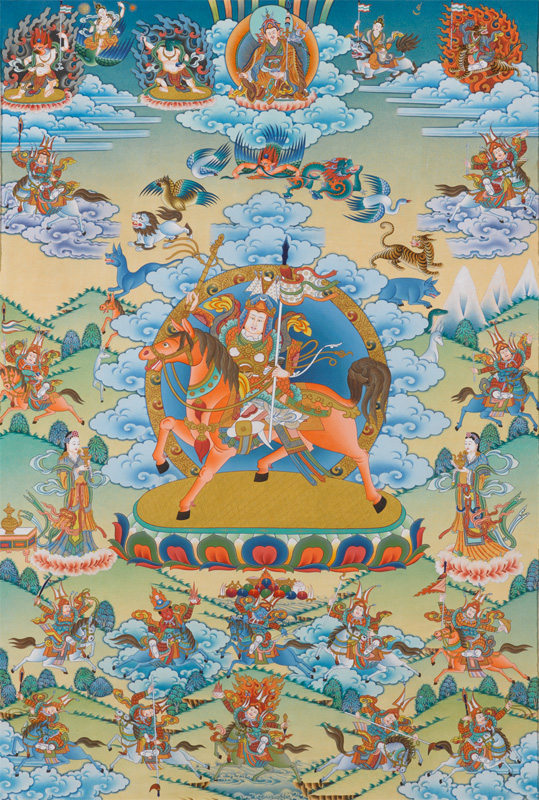Main Practices
King Gesar, the Enlightened Warrior



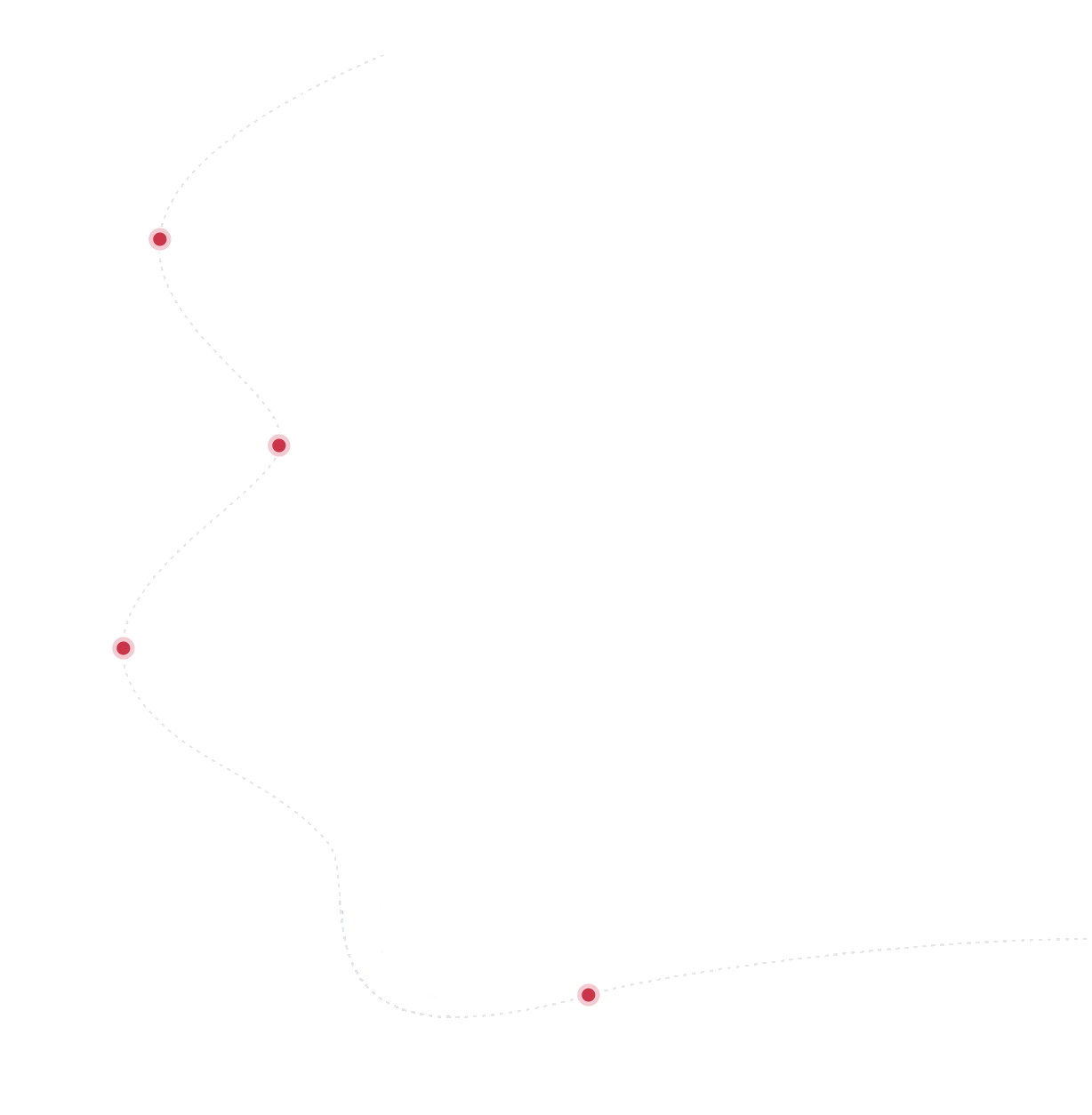
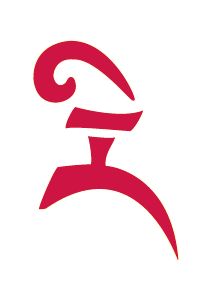
King Gesar, the Enlightened Warrior
The Lhasang is a smoke offering ritual offered to the Deities and the Three Rare and Sublime Jewels, the Three Roots, the Dharma Protectors and Guardians, the wealth gods, local deities, lords of the soil, etc. By doing so, any impurities and corruptions are cleansed and purity of intention is brought about.
The practicing of Lhasang is also said to help increase the Lungta of a place or a person and to invoke the Dralhas.
The Lungta or ‘Wind-Horse’
Lungta or Wind-Horse can be interpreted on four different levels: on an outer level, it was a mystical figure of pre-Buddhist times, symbolizing both the celerity of the wind and strength of the horse to carry out prayers as well as any activities one may embark on. It is related to good fortune – Lung (rlung=wind) means any activity or undertaking; ta (rta=horse) is ‘to follow a path’ or ‘to travel’


The five colours of the banners that serve as illustration of the auspicious connection to increase and generate lungta symbolise the five elements: blue is space, white is water, red is fire, green is air and yellow is earth. The five beings on the flag also represent five elements: the jungle-dwelling tiger is the element of wood, the mountain-dwelling lion the element of earth, the garuda that dwells in space represents air and the fire blazing from his horns is the element of fire while the dragon that dwells in the sea is the element of water.
Furthermore, the emanation of Gesar’s enlightened body and the power that increases the dignity and splendour of yogic practitioners is the lion, the speech emanation and power that increases their renown the dragon, the mind emanation and power that augments their spiritual force the tiger, the emanation of enlightened qualities and force accomplishing their so-called ‘four perfections’, their practice, wealth, zeal and liberation, is the garuda, and the activity emanation and power that unobstructedly accomplishes all Dharmic and mundane affairs exactly as wished for is the Supreme Horse.
The Dralha
Dralhas are dynamically active non-human beings inhabiting the air element, who are usually invisible to ordinary human perception. They form the retinue and agents of Gesar and are usually portrayed as wild, fearless warriors on horseback. The inner aspect of dralha is connected to the subtle energy system in the body, and the ‘secret’ aspect to the nature of mind.
It is also a wordly deity who serves as protector, companion and helper on the spiritual path.

How to make a Lhasang?
You make a physical offering of the smoke of various sweet-smelling woods such as white and red sandalwood, frankincense, artemisia, juniper and so forth along with flour mixed with a top-offering of tea, alcohol, milk and so on and consecrated with mantra and mudra. In an imagined smoke-offering fire-pit or the divine palace of a smoke-offering oven create an infinite emanation of the outer, inner and secret offerings, and—more especially—having filled all of space with clouds of purifying smoke, imagining an outpouring of an infinity of offerings such as flowers, incense, lamps, perfumed waters, foodstuff, music and the trio of amrita, rakta and torma, the eight auspicious substances and eight auspicious symbols, the seven treasures of a universal monarch and so on. Pleasing the deities of primordial awareness and worldly gods with real and imagined offerings such as these, gather the accumulations by the power of which you purify all your non-virtuous actions, violations of your general and specific vows and tantric oaths, reneging on your vows and undertakings, breaking vows and promises, acting hypocritically, repaying kindness with ingratitude, failing to act with modesty and decorum and so on whereby your mental-stream has become defiled.

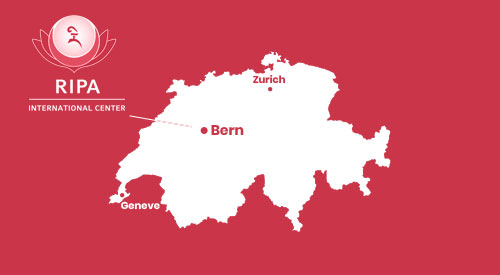
Centre Ripa International
Hilfligweg 10,
3172 Niederwangen, Bern,
Suisse
Phone: +41 (0)31 984 03 58
Email: info@ripa-international.com
